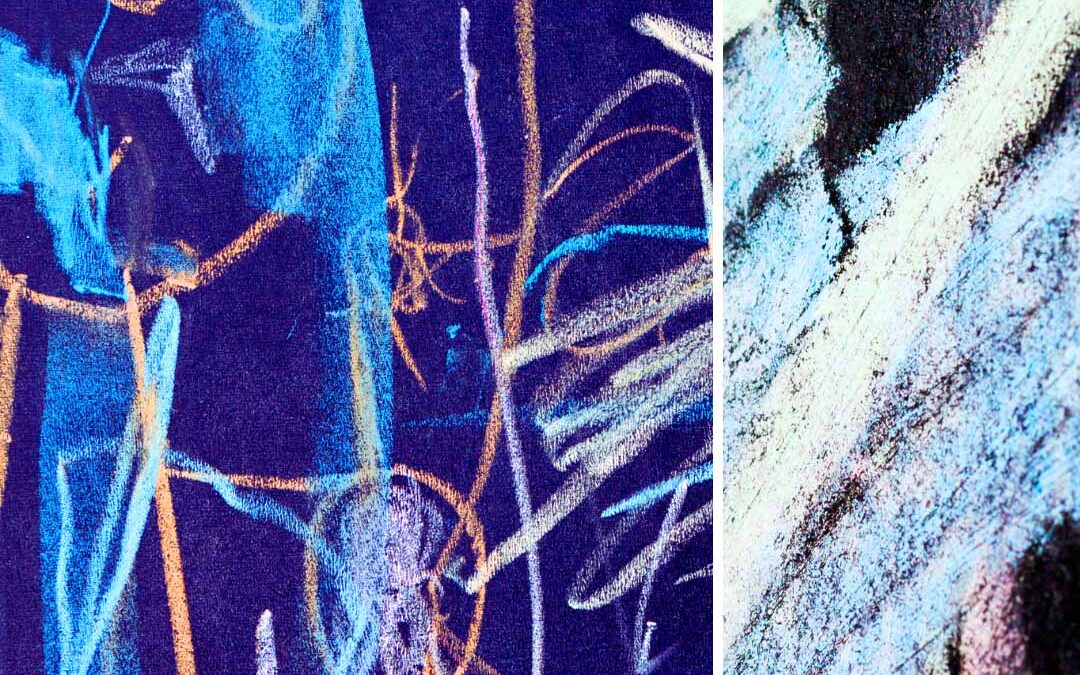I hadn’t been planning on getting to know my other hand any time soon, but life changed course in a few short seconds. Yeah, I broke my wrist a few weeks ago which started me on a crash course of familiarising myself with what my other hand could and couldn’t do.
I mean I hadn’t spent much time thinking about its capabilities until I found myself kind of forced into exploring further….
And you know, what I found surprised me! I found my non-dominant hand was steady – even steadier than my dominant hand! Surprising as this was, it was also a relief as I had worried about messing up my paintings with uncontrolled marks and smudges. Both of these would be fine if that’s what I was planning, but not so great if I was aiming to produce something more controlled.
As I eased into using my other hand, I found that the longer I painted the less aware I was of using it. It felt normal – sort of. That was unexpected too! Anyhow, I talked a bit about this in a message I sent out to my email list, so I won’t repeat myself here. Instead, I want to share with you a couple of playful activities to help you explore the hidden secrets of your other hand.
The creative, emotional and intuitive qualities we associate with the right side of the brain are in fact the ones that appear most easily when we paint or draw using our non-dominant hands.
Maybe try one or both of the exercises below so you can decide if using your non-dominant hand changes your thinking or creativity in any way.
- Blind Contour Drawing
Blind contour drawing is a technique that helps you focus on what you can see in front of you, rather than what you think you can see. It’s practised by art students to improve their observational skills and draw more realistically. You don’t have to be an artist to do this though!
It’s a fun exercise where you place your pencil on the paper in the position you’ll start drawing. You hold it there and raise your eyes to look at the person or object you’re going to draw. As you slowly move your eyes around the edges of the person or object, you begin drawing in a steady, continuous line without looking at the paper or lifting the pencil.
Blind contour drawing creates a shift from left to right brain thinking. Using the other, non-dominant hand, allows the shift to happen immediately. So following this process allows you to let go of outcomes, and practise detachment and self-compassion.
Why not try it and see what you think? It’s fun if you do it with someone else at the same time. You could also do it on Zoom!
- Drawing in the Dark
Drawing in the dark allows you to make art without judgement, free from your inner critic. You can doodle, draw shapes and lines, scribble – anything you feel like doing. Not being able to see what you’re creating will remove negative thoughts and criticism. It’ll stop you fixating on getting it right or making it look a certain way. The experience will free you and allow you to relax and enjoy the process, rather than the outcome.
Collect a few materials together. Whatever you’d like to work with. Maybe some crayons, felt tips, pencils, pens, and some paper. If it’s evening and you can turn out the light, that’s good, otherwise cover your eyes with a scarf, for example.
Pick up one of your drawing tools with your other, non-dominant hand, and begin drawing, sketching, scribbling – whatever feels good. You can imagine you’re drawing something specific, or you can try to represent an emotion. Perhaps how you’re feeling right now, or felt during the day.
Continue adding to your artwork until you decide it’s finished.
Switch on the light or remove your eye covering, and see what you’ve created. Spend a little time studying it.
I hope you have fun with these exercises! Email me or comment below. I’d love to know how you get on😍

